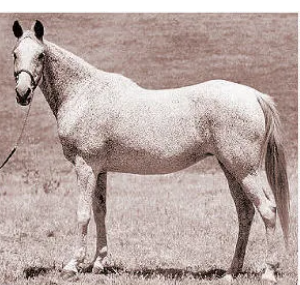Al-Itaq adopted twelve fundamental principles that reflect its philosophy and define its approach. These principles act as the governance frameworks within which the goals and definitions of Al-Itaq are articulated. The twelve principles are organized under four categories:
Identity
Setting a framework for answering the question of identity that is based on cultural values, authenticity, and acceptance of breed integrity.
Knowledge
Information is the basis for authentication. Reaching reasonable conclusions on authenticity must involve research knowledge on sources and contexts of acquisition and importation.
Quality
Quality is a multifaceted notion that includes a variety of visible and invisible characteristics and entails diversity and variation.
Conservation
The challenge of preservation is a collective responsibility that requires diversity of practices guided by modern science and bounded by cultural values.

Identity Principles
Culture
Any definition of the Arabian horse needs to be aligned with the cultural values ascribed to it by its original custodians, the Arab Bedouin tribes of Arabia. A horse’s identity as an Arabian is based on its authenticity and its purity, both notions being encompassed in the ancient Arabic concept of ‘atiq and the more recent equivalent notion of asil.
Authenticity
The term ‘atiq carries multiple overlapping meanings that include authenticity, purity, and quality all at the same time. Purity as a cultural notion represents an ideal state that the Arab Bedouin strived to maintain. Authenticity is the quality of being rooted in ancient, safeguarded, and well-protected Arab Bedouin bloodstock.
Integrity
The integrity of the Arabian horse breed as it has reached us from its original Bedouin custodians is accepted. From a historical standpoint, the notion of ‘atiq was the primary determinant of this integrity. Any changes brought into the breed outside this cultural framework undermine its integrity.
Knowledge Principles
Information
Information is essential for determining ‘atiq status. Without evidence of Arab Bedouin origin, a horse cannot be authenticated as ‘atiq.
Context
Traditional Arab Bedouin values and breeding practices provide the general context for accepting the authenticity of a horse as ‘atiq.
Reasonable Assumptions
In the absence of definitive evidence, reasonable assumptions constitute the practical means for assessing the ‘atiq status of modern Arabian horses. Reasonable assumptions are based on solid research and contextualized analysis of the evidence available.
Quality Principles
Characteristics
The identifying characteristics of the Arabian horse are numerous and mutually reinforcing; they include morphological, functional, and genetic aspects. The nobility and elegance of the Arabian horse derive from its functional characteristics. The qualities of the Arabian horse are largely shaped by the ecological environment and living conditions in its original habitat of Bedouin Arabia. Any practices that result in the degradation of the Arabian horse’s characteristics should neither be adopted nor encouraged.
Diversity
Morphological diversity is a positive sign of the Arabian horse breed’s vitality and genetic diversity. Variation within the morphology ("types") is acceptable within the normal boundaries initially observed in its original habitat of Bedouin Arabia. No single selective type or "look" is to be imposed on the Arabian horse breed.
Conservation Principles
Preservation
Preserving the Arabian horse means maintaining its integrity and original qualities for the benefit of future generations. No improvement upon the Arabian horse is necessary. Characteristics not observed in its original habitat of Bedouin Arabia go against the foundational integrity of the Arabian horse.
Selection
Selection is an important element of the conservation of the Arabian horse. While a larger set of strains existed among the Bedouins, only a subset consisting of the most authentic strains was considered fit to be bred from (shubuw). Stallions with the best qualities were selected from this subset of strains. The selection of qualified stallions for breeding was one way the Bedouins maintained the ‘atiq characteristics of their horses.
Modern Science
Science can provide the evidence to help determine the ‘atiq status of an Arabian horse. It can help maintain the original integrity of the Arabian horse for future generations. Scientific research needs to work hand in hand with historical research to interpret results in their cultural context.
Ecosystem
An ecosystem consisting of breeding, competition, registration, trade, and research is critical to preserve the ‘atiq characteristics of a horse as outlined in the above principles.
